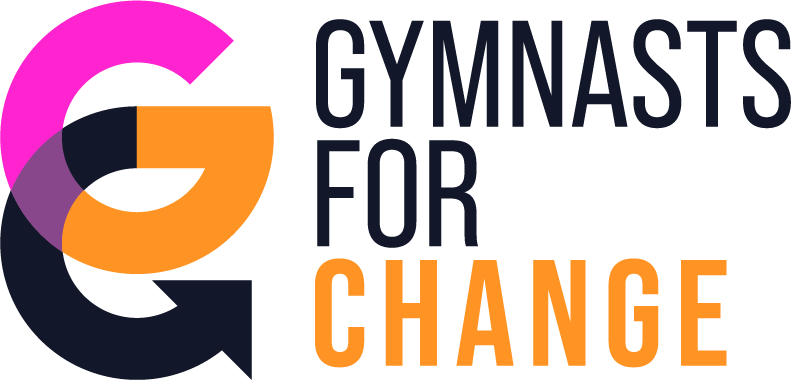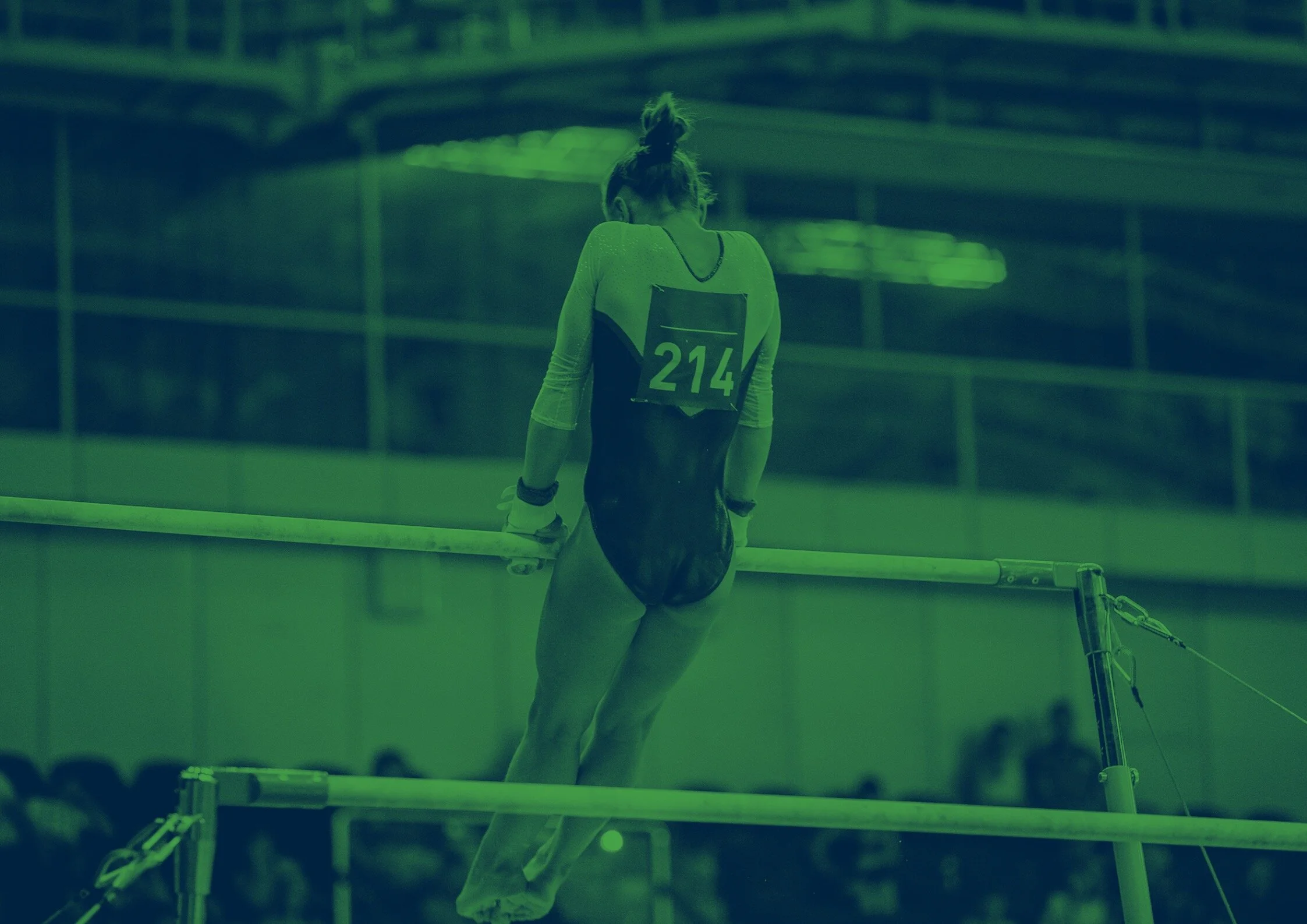The Future of Women’s Artistic Gymnastics
Eight actions to protect gymnasts from abuse
In August this year, the International Socio-Cultural Research Group on Women’s Artistic Gymnastics (ISCWAG) published an open letter, setting out the eight key actions they recommend to protect gymnasts from abuse.
We have republished the letter in full here - read on to discover why ISCWAG believe women’s artistic gymnastics is in need of reform.
The past weeks have deeply shaken the Olympic sport of women’s artistic gymnastics (WAG). Using #gymnastalliance, dozens of current and former gymnasts from several countries have taken to social media to speak out about the emotional/psychological, physical and sexual abuse they have experienced, including body-shaming, bullying and intimidation; racism; dietary control and restriction; overtraining and forced training and competing while injured; medical neglect; and sexual harassment and rape. The statements also demonstrate that the abusive treatment by coaches, officials and WAG organisations was actively covered up in an attempt to save personal status, public image and public relations.
The culture that the gymnasts have described is due to deep-seated ideas that have shaped and continue to shape WAG. One dominant idea is ‘sport as commodity’, which based on neoliberal models of high-performance sport governance, have created a ‘win at all cost’ mentality. The gymnasts’ speaking out has painfully exposed how this model of sport creates abusive treatment and short- and long-term suffering.
A second idea is the ‘pixie model of WAG’. This model emerged during the 1970s, when increasingly younger and child-like gymnasts began to dominate competitions. This idea assumes that an immature physique and mind are best suited to learn complex gymnastics skills. Puberty is feared as the physical changes this development causes are assumed to reduce perceived performance prerequisites. The career timeframe of the pixie model idea is thus short and believed to demand early specialisation and intense training during childhood. The abusive coaching, dietary restrictions, and refusal/delay of medical treatment reported in research and by gymnasts are symptoms of the strategies currently believed indispensable to achieve the necessary skill learning in the available timeframe.
A third idea that contributes to WAG constituting an abusive culture is that of ‘gender and femininity’. Ideals of femininity are fundamental to WAG (e.g., development of the sport; clothing; apparatus; dance-type performance requirements; glamorous image). These ideals also create unequal adult-gymnast relationships (e.g., coach-gymnast; official-gymnast; doctor-gymnast). Research and the gymnasts’ speaking out demonstrate that these relations, in many cases, empower coaches and officials and disempower gymnasts into submissiveness and obedience. The gymnasts’ long-term silence demonstrates how many gymnasts are not given a voice. This breaches human/child rights and gymnasts say it can take years to (re)gain their voice once they have retired from the sport.
The exposure of the widespread culture of abuse in WAG has resulted in calls for urgent change. This change must be comprehensive, entailing actions at the ideological, structural, managerial and practical levels. Some of the actions are needed immediately; other actions will require long-term efforts.
This manifesto is signed by 23 international scholars who are members of the International Socio-Cultural research group on Women’s Artistic Gymnastics. Together, the scholars have during the past decades extensively researched WAG, always with the aim to describe, explain and improve this sport. We propose eight actions for the future of WAG, all of which aim to empower gymnasts and decentralise the authoritative position coaches, officials, support staff, and other authorities have in WAG.
1. Independently investigate abuse allegations.
Independent investigations are crucial to overcome conflicts of interest and build trust with victims/survivors and their families, future athletes, and the public. Our vision for the future is that investigations: (1) are contracted out to organisations who adopt a survivor-centred approach to their investigation; (2) engage professionals who victims/survivors can relate to (i.e., gender relations are particularly important in this regard); (3) consult gymnasts about what an investigation should entail and how they want to participate in it; (4) allow gymnasts to bring to the investigation individuals who can support them during the process; (5) adopt a no victimisation and shaming policy; and (6) make the results of investigations publicly available.
2. Acknowledge wrongdoings.
Acknowledging wrongdoing, regardless of the type of poor practices and/or severity of abuses, and how far back in time they reach, represents an important step in being transparent about the past and the reconciliation it may require. Such acknowledgement is also important for the rebuilding of trust between current/former gymnasts and the organisations that were in charge of taking care of them, and ensuring a sound public image. Finally, acknowledging wrongdoing will support gymnast healing. Our vision for the future is that WAG organisations: (1) publicly and individually acknowledge and apologise for the abuse that has been reported; (2) provide victims/survivors with appropriate and sustained support (e.g., funded counselling); and (3) are transparent about the actions being taken to manage the disclosures.
3. Prioritise athlete rights.
The WAG population consists mostly of girl children, who due their age and gender, are vulnerable to abuse and exploitation. As such, their power and agency over the conditions within which they participate are limited if not diminished. Our vision for the future is that WAG organisations: (1) critically reflect on the effectiveness of their athlete welfare policies and practices; (2) consider if minimum ages for participating in high-level competitions could be a means to protect gymnasts; (3) consider how a legally binding contract between gymnasts and WAG-organisations could enhance gymnast rights by mandating organisational roles and responsibilities and support services available to gymnasts; (4) integrate gymnasts in all relevant organisational boards by at least a 30% share; (5) actively encourage and support the creation of independent gymnast associations (e.g., gymnast union); (6) implement a permanent independent auditing system that monitors athlete rights, investigates breaches and is able to reprimand with bans and/or deaffiliation; (7) create national and international authorities who register coaches that have ISCWAG_manifesto 2020-08-19 Page No: 3 (5) been found to abuse gymnasts in any form, which safeguarding leads in sport and non-sport organisations can consult when hiring new coaching/medical/other staff, and can penalize clubs that have hired coaches listed in such registers.
4. Create effective gymnast welfare.
Health and wellbeing support is in many countries either limited or steered by coaches and WAG organisations. Sustained professional care is paramount for performance and welfare. Our vision for the future is that WAG organisations: (1) create independent welfare systems that include professional nutrition and psychology support along with what already exists in terms of medical or sport science support and put mechanisms in place that ensure, on the one hand, gymnast confidentiality, and on the other, effective communication between professionals and coaching staff; (2) provide counselling sessions that support gymnasts during their careers and when going through the retirement process; (3) engage athlete welfare officers whose role it is to be available on a day-to-day basis to care for gymnasts (esp. for those living away from home), and are present at all competitions; (4) appropriately integrate parents/caregivers into the training/coaching/competition process; (5) educate gymnasts on what abusive treatment and coaching is and where such behaviours and practices can be reported; (6) create channels through which gymnasts and parents/caregivers can safely report abuse; (7) implement a permanent independent auditing system that monitors athlete welfare, investigates breaches and is able to reprimand with bans and/or de-affiliation; and (8) put in place a mechanism to continuously reflect over policy, practice, and intended and unintended consequences.
5. Educate coaches, officials, parents and significant others.
Much of today’s coach education focuses on technical aspects. Education for officials, parents and significant others is missing. Our vision for the future is that WAG organisations: (1) strategically use the adult gymnast as a role model to renormalise what gymnastics is, who gymnasts can be and what performances they can execute; (2) extend coach education with curriculum focusing on abusive behaviours and practices, child development, training during childhood and youth, and gender ideals; (3) implement education for officials, members of boards of directors, parents and significant others on what abuse is and how to support and protect gymnasts; (4) collaborate with scientists from both the social and natural sciences to create educational curriculum that is evidence-based and state-of-the-art.
6. Change the representation of gymnasts in the media.
WAG organisations, the media and social media have generally contributed to mystifying the pixie model of WAG. This mystification has contributed to gymnasts being hyper-feminised and sexualised, a representation that objectifies rather than affords gymnasts agency over their lives. Our vision for the future is that WAG organisations, journalists, those active on social media, and fans: (1) carefully consider how their reports, blogs, images and posts sustain the pixie model; (2) focus on representations that demystify the pixie model of WAG (e.g., celebrate gymnast agency; cover older gymnasts; focus on different styles of WAG); and (3) continue to critically report on abuse and organisations’ failures to protect gymnasts.
7. Withdraw sponsorship.
Many WAG organisations receive (significant) sponsorship. As with the media, this funding is implicated in sustaining the pixie model of WAG and the ways WAG organisations run their sport. Our vision for the future is that sponsors: (1) critically assess how WAG organisations ensure gymnast welfare and protect against abuse when negotiating current and future sponsorship deals; (2) demand that WAG organisations protect gymnasts should sponsorship be considered; (3) suspend and if need be withdraw sponsorship contracts if WAG organisations are found to employ abusive coaches, breach human/child rights policies, and fail to ensure gymnast welfare.
8. Conduct responsible WAG research.
Sport science research has in many cases accepted the idea that gymnasts should be children and of thin/immature stature and thus, have contributed to the pixie model of WAG becoming institutionalised globally. Our vision for the future is that researchers and research funding agencies: (1) carefully consider the implications of the research they conduct/fund, especially in relation to the pixie model; (2) include criteria that demands athlete welfare beyond that of standard ethical guidelines (both as funders and reviewers); and (3) examine and fund research that actively aims to demystify the pixie and win-at-all-cost model of contemporary WAG, and generates knowledge, methods, and tools that provide WAG organisations with the means to change the sport. We believe that the eight actions we have outlined above will contribute to protecting gymnasts from abuse, which will facilitate their health and wellbeing, and lives post retirement. We are also certain that the actions will improve gymnast performance. This will provide WAG organisations with potential to enhance the sport’s image and public relations and realise the promise of sport for the holistic health and wellbeing of children and youth. Lastly, while this manifesto addresses the future of WAG, ISCWAG research has also covered men’s artistic and rhythmic gymnastics, and other artistic sports, including figure skating and synchronised swimming. Based on the insight gained through this research, as well as recent allegations of abuse in these and other gymnastics sports (e.g., acrobatics; trampolining), we believe that the actions proposed here also inform these sports’ futures.
Signatories
Natalie Barker-Ruchti, Örebro University, Sweden
Elizabeth Booth, University of Greenwich Business School, UK
Michele Viviene Carbinatto, University of São Paulo - Brazil
Francesca Cavallerio, Anglia Ruskin University, UK
Georgia Cervin, University of Western Australia, Australia
Peter Donnelly, University of Toronto, Canada
Frank Jacobs, The Hague University of Applied Sciences, The Netherlands
Gretchen Kerr, University of Toronto, Canada
Roslyn Kerr, Lincoln University, New Zealand
Bruce Kidd, University of Toronto, Canada
Annelies Knoppers, Utrecht University, The Netherlands
Melanie Lang, Edge Hill University, UK
Rhiannon Lord, Abertay University, Scotland
Aalaya Milne, University of Toronto, Canada
Myrian Nunomura, University of São Paulo, Brazil
Maria Claudia Brandão Pinheiro, University Institute of Maia - ISMAI, Portugal
Mauricio Santos Oliveira, Federal University of Espírito Santo, Brazil
James Pope, Bournemouth University, UK
Astrid Schubring, University of Gothenburg, Sweden
Froukje Smits, Utrecht University of Applied Sciences, The Netherlands
Carly Stewart, Bournemouth University, UK
Ashley Stirling, University of Toronto, Canada
Erin Willson, University of Toronto, Canada

